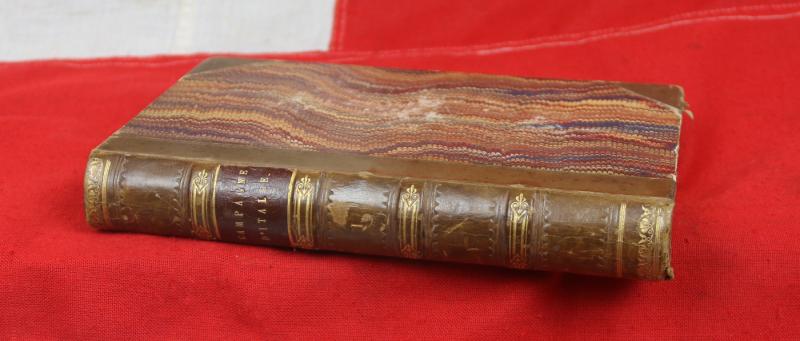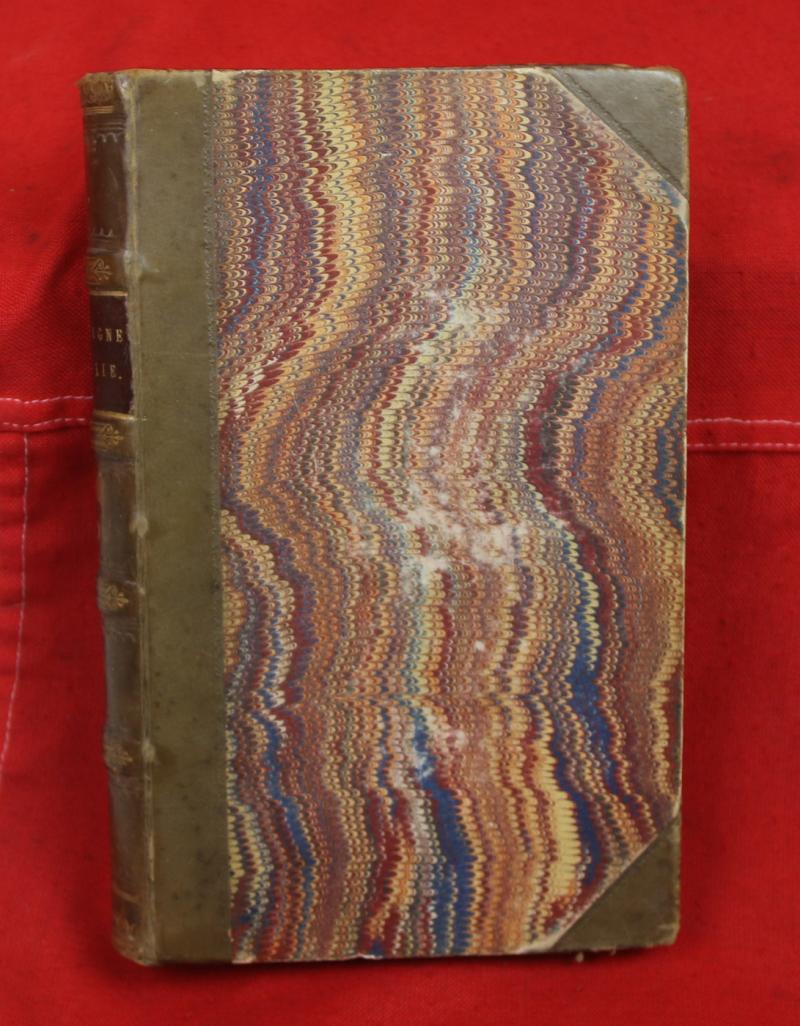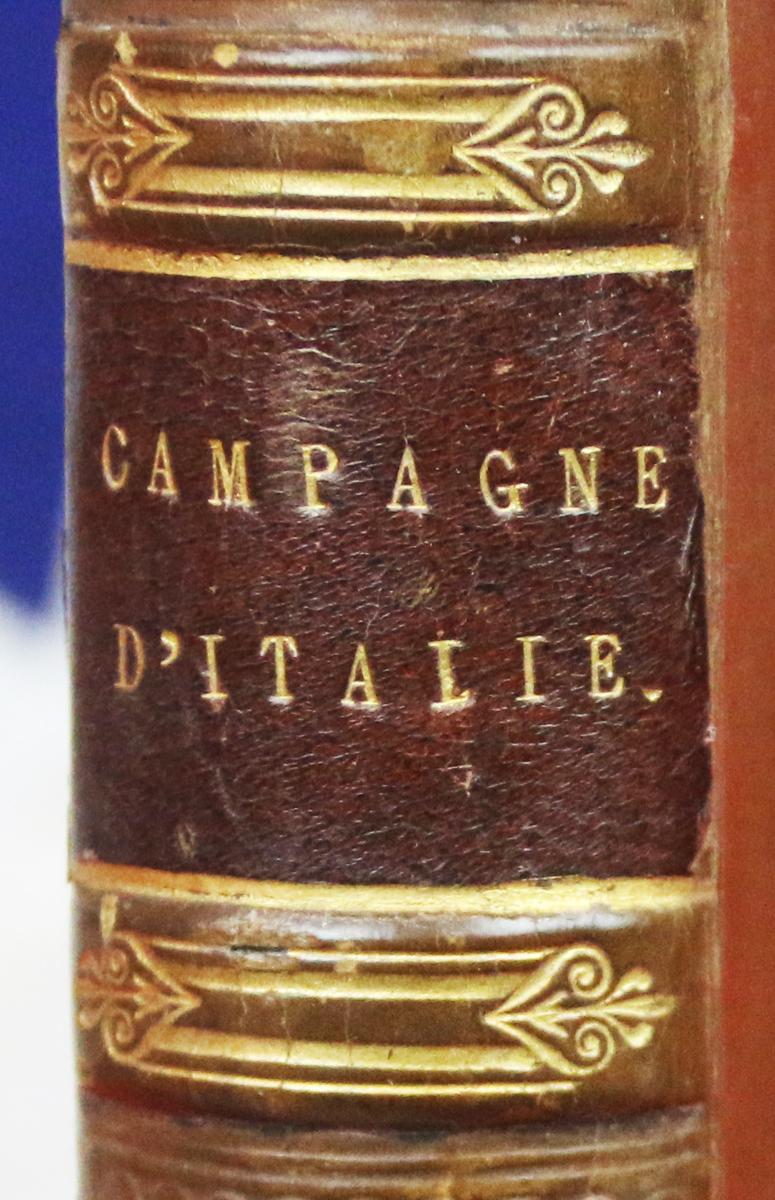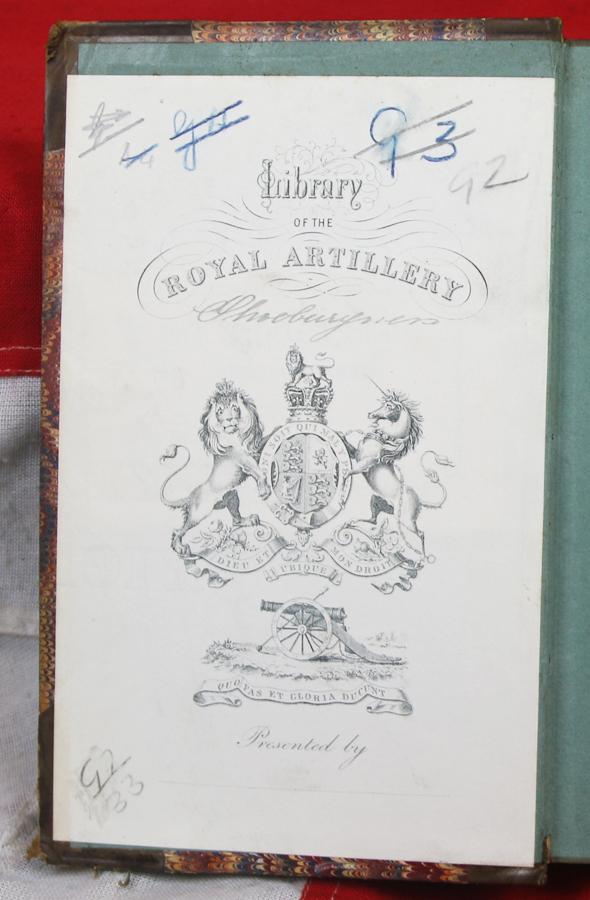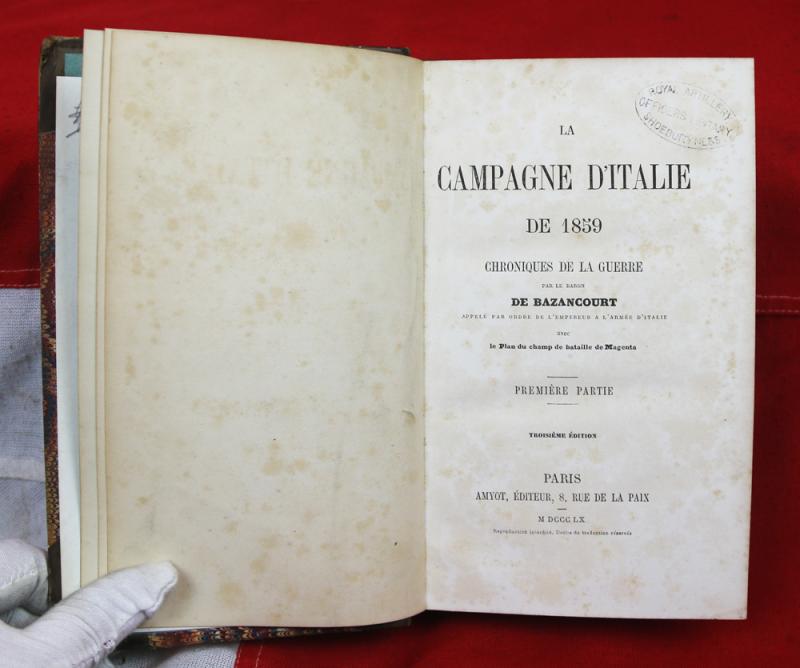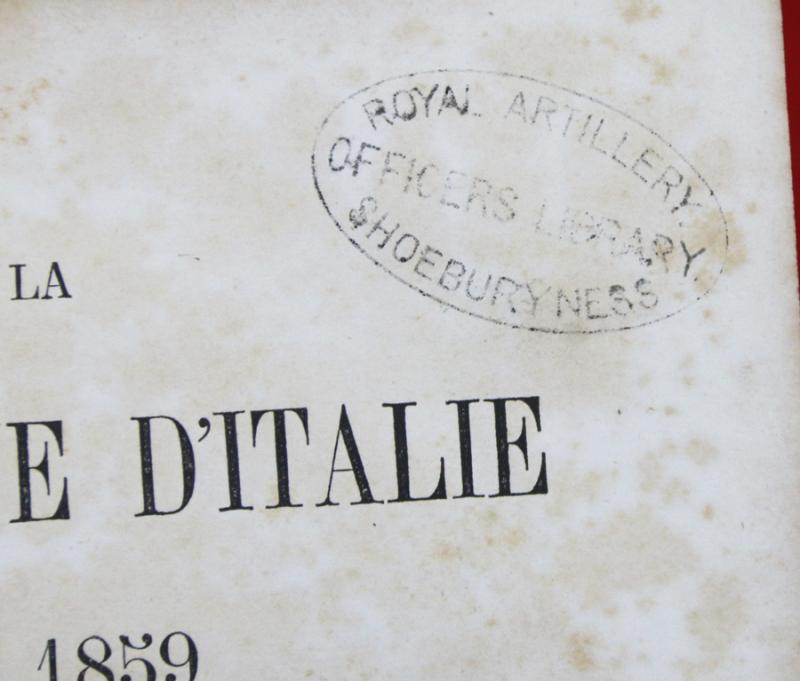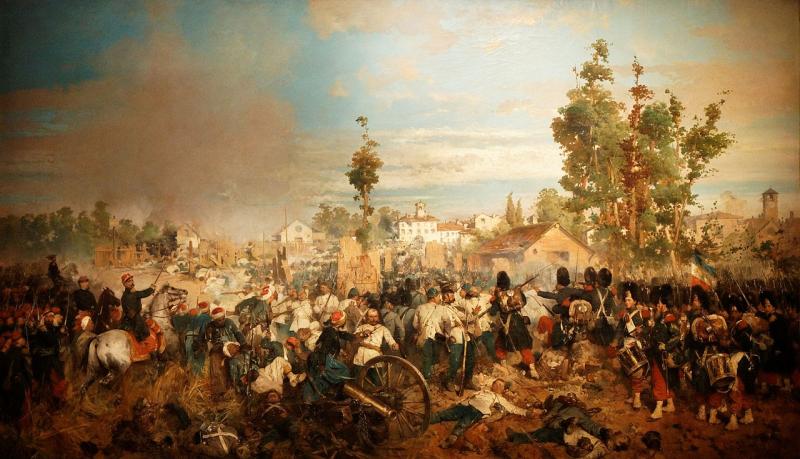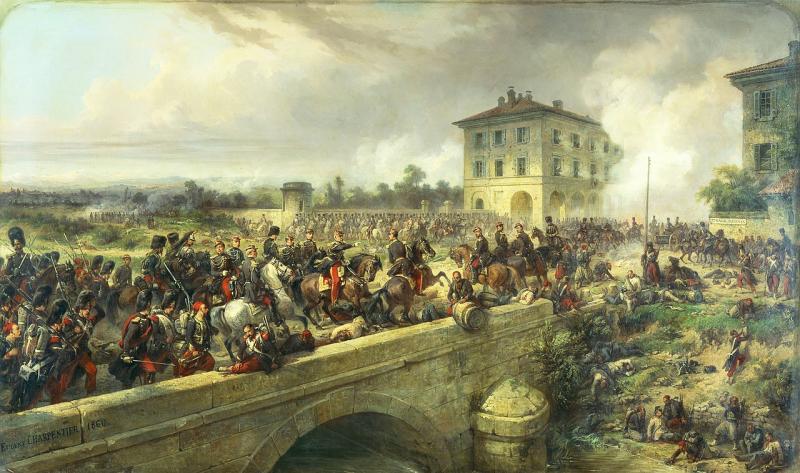LA CAMPAGNE D'ITALIE DE 1859. CHRONIQUES DE LA GUERRE. Par le Baron de BAZANCOURT, appele par ordre de L'Empereur a la armee d'Italie. avec le plan du champ de bataille Magenta Vol 1
From the Library of the Royal Artillery Shoeburyness
French book with fine leather binding with gilt tooling. With page foxing throughout, and a fold out map of the battle [photo of map to be added].
The Battle of Magenta was fought on 4 June 1859 during the Second Italian War of Independence, resulting in a French-Sardinian victory under Napoleon III against the Austrians under Marshal Ferencz Gyulai.
It took place near the town of Magenta in the Kingdom of Lombardy–Venetia, a crown land of the Austrian Empire, on 4 June 1859. Napoleon III's army crossed the Ticino River and outflanked the Austrian right forcing the Austrian army under Gyulai to retreat. The confined nature of the country, a vast spread of orchards cut up by streams and irrigation canals, precluded elaborate manoeuvre. The Austrians turned every house into a miniature fortress. The brunt of the fighting was borne by 5,000 grenadiers of the French Imperial Guard, still mostly in their First Empire style of uniforms. The battle of Magenta was not a particularly large battle, but it was a decisive victory for the Franco-Sardinian alliance. Patrice de MacMahon was created Duc de Magenta for his role in this battle, and would later go on to serve as President of the French Third Republic.
LA CAMPAGNE D'ITALIE DE 1859. CHRONIQUES DE LA GUERRE. Par le Baron de BAZANCOURT, appele par ordre de L'Empereur a la armee d'Italie. avec le plan du champ de bataille Magenta
Review published by the New York times on April 17, 1860
This work has just been completed It is a complete, clear, and admirable history of the Italian campaign of last year, -- written with special regard to military accuracy, and yet with great spirit and literary ability. It is by far the best history of this remarkable chapter of current events which has yet been written. The author in his preface disavows all pretensions to write a history, -- and professes to give merely a report of events, leaving the estimate of their importance, and their bearings upon the fortunes of the several countries most directly interested, to be made by others. He aims solely to rehearse incidents, -- to "present those great military exploits still fresh and alive with the noble emotion of the engagement, -- to trace the living drama on the fields of battle, -- to accompany, day by day, hour by hour, step by step, those intrepid battalions thrown so suddenly upon the field of battle in the name of the holiest of causes." He has performed his task with fidelity and ability, and claims as its special merit that he has not made a single statement without having for it the most unquestionable authority. Indeed, he has introduced throughout citations from official documents, and has collected in the appendix all the dispatches relating to the war.
New York Times April 17, 1860
------------------------------------------------------------------
The Battle; An overwhelming majority of the French-Piedmontese coalition soldiers were French (1,100 were Piedmontese and 58,000 were French).
The Battle of Magenta was fought on 4 June 1859 during the Second Italian War of Independence, resulting in a French-Sardinian victory under Napoleon III against the Austrians under Marshal Ferencz Gyulai.
It took place near the town of Magenta in the Kingdom of Lombardy–Venetia, a crown land of the Austrian Empire, on 4 June 1859. Napoleon III's army crossed the Ticino River and outflanked the Austrian right forcing the Austrian army under Gyulai to retreat. The confined nature of the country, a vast spread of orchards cut up by streams and irrigation canals, precluded elaborate manoeuvre. The Austrians turned every house into a miniature fortress. The brunt of the fighting was borne by 5,000 grenadiers of the French Imperial Guard, still mostly in their First Empire style of uniforms. The battle of Magenta was not a particularly large battle, but it was a decisive victory for the Franco-Sardinian alliance. Patrice de MacMahon was created Duc de Magenta for his role in this battle, and would later go on to serve as President of the French Third Republic.
Code: 24591
165.00 GBP

